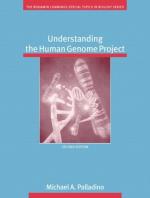|
This section contains 3,307 words (approx. 12 pages at 300 words per page) |

|
It was the Moravian monk Gregor Mendel, working in his monastery's garden in the 1860s, who cracked the secrets of heredity, but it was not until the beginning of the twentieth century that his insights were recognized and developed. Thanks particularly to the work of Thomas Hunt Morgan and his associates, working at Columbia University in New York, it was learned that the basic units of heredity, the genes, lie along thin, paired strings (chromosomes), in the centers of cells, and that these are not only the units of function—the things that carry the information used in building the finished organism—but also the units of heredity—the things passed on from one generation to the next.
In 1953, working in Cambridge, England, James Watson and Francis Crick confirmed the growing suspicion that the genes are long macromolecules of deoxyribonucleic acid (DNA), and famously...
|
This section contains 3,307 words (approx. 12 pages at 300 words per page) |

|


